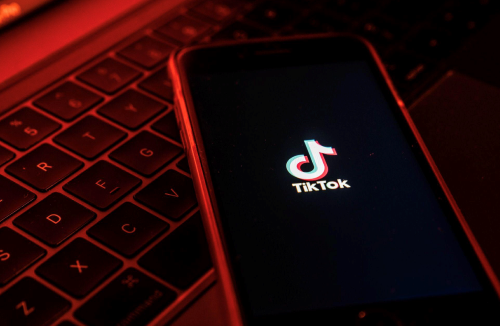In our increasingly digitized world, the practice of application monitoring has evolved from an option to an indispensable necessity. Why monitoring you application is important? Regardless of whether you’re a technology enthusiast, a small business owner, or part of a vast multinational enterprise, the efficiency, security, and adaptability of your applications are the bedrock of your online presence. This article delves into the profound importance of application monitoring and delves into why it should take center stage in your digital strategy.
I. The Significance of Application Monitoring
A. Ensuring Peak Performance
Mitigating Downtime
In this digital age, downtime is the bane of progress. Every moment your application is inaccessible translates to potential losses, be it in terms of revenue, productivity, or the integrity of your brand. Application monitoring operates as your digital guardian, actively identifying issues, bottlenecks, or glitches that could lead to downtime. By recognizing and addressing these issues proactively, you can significantly reduce disruptions to your services.
Enhancing User Experience
User experience is the North Star in the digital universe. Slow load times, unresponsive features, or frequent crashes can rapidly deter users, causing long-lasting harm to your brand. Application monitoring empowers you to track user interactions, analyze their behavior, and enhance the user experience. This data empowers you to make data-driven improvements that keep your users engaged and content.
B. Security and Data Protection
In an era riddled with data breaches and cyber threats, safeguarding sensitive information is non-negotiable. Application monitoring assumes the role of your digital fortress, defending against security breaches and data vulnerabilities. It can detect and alert you to suspicious activities, unauthorized access attempts, and other security risks, enabling you to respond swiftly to mitigate potential damage.
C. Scalability and Resource Management
As your business expands, so does the demand on your digital infrastructure. Without proper monitoring, it can be challenging to anticipate when and where you should scale your resources. Monitoring tools provide insights into your application’s performance under varying workloads, helping you make informed decisions about resource allocation and scalability. This adaptability is vital to accommodate changes in traffic and user activity seamlessly.
II. Key Metrics to Monitor
To fully harness the power of application monitoring, it is vital to concentrate on key performance metrics. Consistently tracking these parameters can offer invaluable insights into your application’s health and efficiency.
A. Response Time and Latency
Response time and latency metrics are the lifeblood of your application. Response time measures how quickly your application responds to a user’s request, while latency reflects the time it takes for data to travel between the client and server. Monitoring these metrics provides a glimpse into the user experience. Sluggish response times and high latency can frustrate users, while swift responses and low latency lead to a smoother experience.
B. Error Rates and Error Messages
Errors are an inherent part of the digital landscape, but their frequency and severity can vary. Monitoring error rates and error messages helps you identify problematic areas within your application. This data allows you to pinpoint recurring issues, address them promptly, and enhance the overall stability of your system.
III. Cybersecurity Threats
A. Surge in Cyberattacks and Their Ramifications
The digital world is a realm of endless opportunities but is also a magnet for malevolent entities seeking to exploit vulnerabilities for personal gain. Cyberattacks have seen an exponential increase in recent years, posing grave threats to individuals, businesses, and even governments. These attacks can compromise sensitive data, disrupt services, and inflict financial and reputational damage.
B. Hacking, Ransomware, and Data Breaches
Hacking, ransomware, and data breaches have become commonplace terms in the digital landscape. Hacking involves unauthorized access to systems, ransomware seizes control of systems until a ransom is paid, and data breaches expose sensitive information to unauthorized individuals. Application monitoring stands as your primary line of defense against these threats.
Monitoring tools can detect irregular patterns, unauthorized access attempts, and suspicious activities, enabling you to take swift action before a minor security issue escalates into a major catastrophe. By understanding the techniques and motivations of cybercriminals, you can fortify your defenses and protect your digital assets.
IV. Understanding the Dead Internet Theory
A. Explaining the Dead Internet Theory
The Dead Internet Theory, often referred to as the “Die Hard Internet” theory, posits a fascinating concept – that the internet is already dead, but its users are yet to realize it. According to this theory, a vast majority of internet traffic is automated, generated by bots, algorithms, and AI systems. Human interaction and engagement have dwindled, leaving behind a digital wilderness.
B. Examples of How the Theory Manifests
While the Dead Internet Theory may sound dystopian, real-world examples illustrate the proliferation of automated internet activity. Social media platforms, for instance, are inundated with bot accounts that generate fake likes, comments, and follows. This automated activity not only distorts the perception of authentic engagement but also has significant implications for businesses and content creators who rely on these platforms for marketing and outreach.
Application monitoring can assist businesses and content creators in distinguishing genuine user engagement from automated bot activity. By monitoring user behavior and interactions, you can filter out counterfeit engagements, ensuring that your efforts are targeted toward genuine, potential customers.
V. Conclusion
In the ever-evolving digital landscape, application monitoring plays a pivotal role in ensuring the success of your online endeavors. Whether your focus is on maintaining optimal performance, safeguarding against cybersecurity threats, or navigating the challenges posed by the Dead Internet Theory, monitoring your applications is the key to staying ahead.
By comprehending the importance of application monitoring, prioritizing key metrics, and recognizing the omnipresent cybersecurity threats, you can navigate the digital frontier with confidence. Embrace the power of monitoring and allow it to guide you in an increasingly complex digital world, where success hinges on adaptability and foresight. Your digital guardian awaits – ready to safeguard, optimize, and propel your online presence to new heights.





